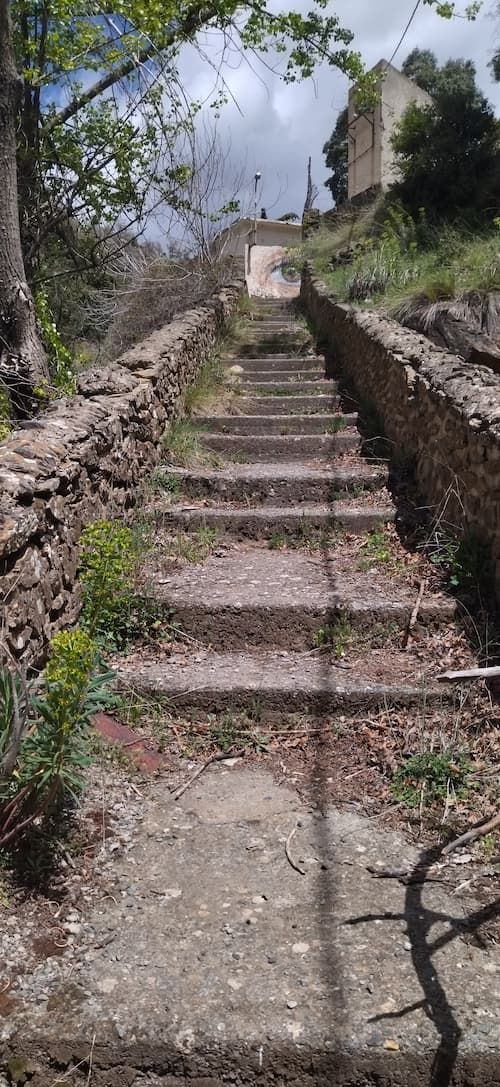Virtual Lectures
Closing the Circle: The Nomad's Sanctuary
Prior to the stay, several online sessions will be held to introduce key topics such as vernacular architecture, the use of water in the urban environment and new models of rural development.
Schedule
Traditional architecture of La Alpujarra
Wednesday, July 16th from 17:00 to 18:00 Spanish time
Traditional architecture in La Alpujarra highlights the importance of vernacular architecture as an expression of the relationship of human beings with space and the natural environment. It highlights the characteristic architectural elements of the houses, the urban adaptation to the terrain and the use of local materials. The architecture of La Alpujarra is characterized by its adaptation to the terrain and climatic conditions, seeking energy efficiency and protection against inclement weather.
José Antonio González Casares, PhD: Professor, ESADA - Architect and Building Engineer from the University of Granada, where he also completed his PhD in Historic Building Structures. He has been the director of ESADA since its inception in 2013. José has also worked as a professor at the University of Granada and the University of Málaga, both in Spain. Along with his academic and teaching experience, he has also worked as an architect in rehabilitation of public houses and for one of the most important monuments in Europe, La Alhambra. He currently teaches Creativity and Project Methodology at ESADA for the Interior Design Degree.
Fernando Ortega Camacho: Professor, ESADA - Architect in the free exercise of the profession and coordinator and professor at ESADA in the specialty of interior design with more than 10 years of teaching experience. He has participated in several Erasmus+ mobility programs for teachers, teaching at design schools such as Art and design Institute in Prague and Biruny University in Istanbul.
New perspectives on La Alpujarra
Thursday, July 17 from 17:00 to 18:00 peninsular Spanish time
Thanks to its geographical location, its natural and scenic wealth or its historical and cultural heritage, the region of La Alpujarra is a wonderful place to live, but also to undertake. Due to the depopulation of the region, the villages of La Alpujarra need to settle young people and attract new residents, generating employment opportunities. For this reason, they currently have innovative projects to attract and settle teleworkers and technological entrepreneurs from all over the world. Contemporary architecture is also a tourist attraction in the area, which boosts the local economy and improves the quality of life of residents.
María José Duran Vaquero: Professor, ESADA - Escuela Superior de Arte y Diseño de Andalucía. Architect by the University of Seville in Spain and Master in Interior Design in Listed Buildings by ESADA where she worked in the rehabilitation of a listed building in the center of the city of Granada. She has also completed a course on historical fabrics and wooden structures. He works for MAntonio Studio in the development of different architectural projects and teaches Vectorial Representation and Building Rehabilitation at ESADA since 2015 with outstanding results. He transmits to his students his passion for interior design and heritage.
Nour Mouati: Expert in Institutional Cooperation and Director of Business Development at Audakia Lab.
Water and architecture in Granada
Friday, July 18 from 17:00 to 18:00 Spanish mainland time
Water is a fundamental element for both life and urban infrastructure. The city of Granada, with its history and legacy, reflects the importance of water in architecture, from the palaces and gardens of the Islamic period to the incorporation of Renaissance and Baroque architecture after the Christian conquest. Water in La Alhambra stands out for its greater representation and symbolism, integrating with architecture to create spaces, recreate paradise and connect construction with nature.
Antonio Ruiz Sánchez, PhD: Technical Advisor to the Autonomous Administration, Junta de Andalucía. Ex-Architect Curator of the Patronato de La Alhambra y Generalife, Granada (Spain). Lecturer and Researcher at the University of Granada in the Department of Structural Mechanics. Master in Architecture and Historical Heritage. Master in Art History and Cultural Management in the Hispanic World. PhD in Civil Engineering from the University of Granada.
